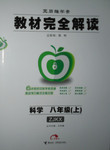题目内容
To the parents’ worry, some middle school students are _________ computer games and completely forget their studies.
A. crazy about B. burying in C. very fond of D. tired of
A

练习册系列答案
 王后雄学案教材完全解读系列答案
王后雄学案教材完全解读系列答案
相关题目
题目内容
To the parents’ worry, some middle school students are _________ computer games and completely forget their studies.
A. crazy about B. burying in C. very fond of D. tired of
A

 王后雄学案教材完全解读系列答案
王后雄学案教材完全解读系列答案